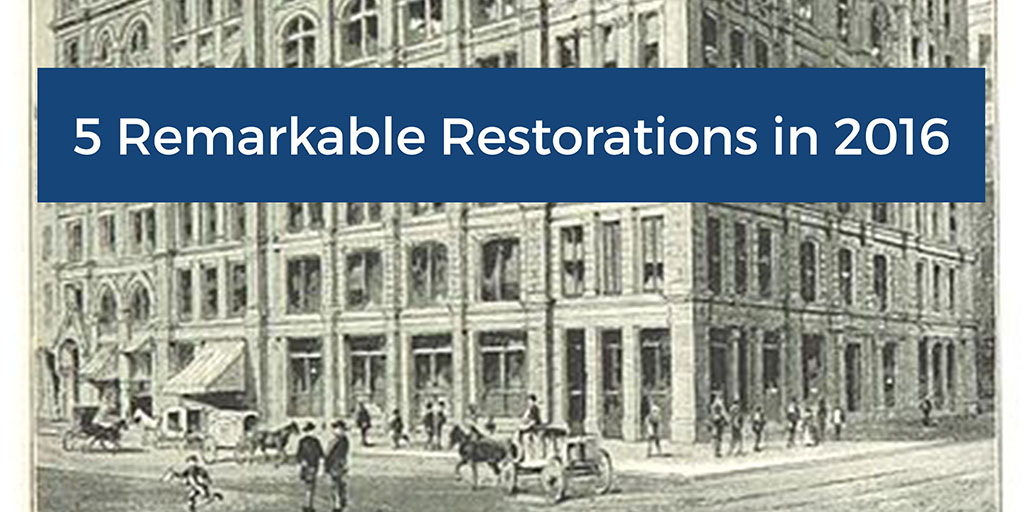Things change; this, we know, is inevitable. However, this notion seems especially true in the world of construction—and even more so in the world of construction within New York City.
While it is sometimes necessary to tear down the old to make way for the new, those of us in the business recognize that this is not always the case. And in 2016, New York City did its best to preserve and restore some of the most well known and beautiful landmarks our Island has had to offer—some of them having been around for over a century. A few honorable mentions are as follows:
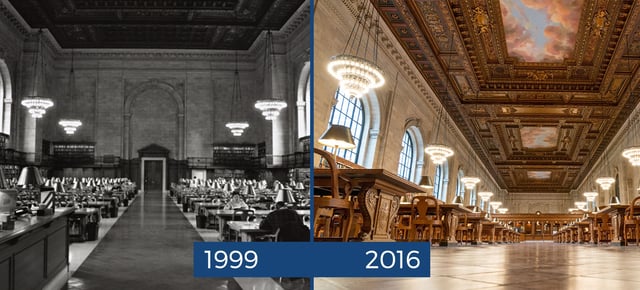
1. The Rose Main Reading Room and the Bill Blass Public Catalog Room at the New York Public Library
Photo Credit: 1999 - NYPL 2016 - NYPL.com
If you've never been to the New York Public Library, there's no better time to go than now. The Rose Main Reading Room and The Bill Blass Public Catalog Room were reopened in October after two years of extensive repairs and restoration, and the city spared very little in terms of celebration. A massive ribbon cutting ceremony was held for the iconic room’s reopening, as it should be, seeing as the NYPL has been known as a national gem since its inception in 1895. With over 53 million items, the library is the second largest public library in the United States, and fourth largest in the world. You can watch an epic time-lapse video of the Rose Room being re-shelved here.
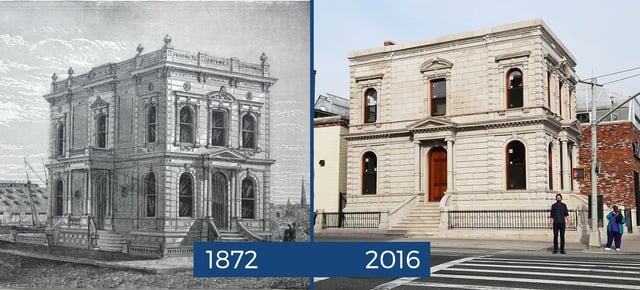 2. Coignet Stone Company Building
2. Coignet Stone Company Building
Photo Credit: 1872 - The Victorian Artificial Stone and Plaster Co. 2016 - Hannah Frishberg on Brownstoner.com
Construction began on the two-story, 3,000-square-foot former New York and Long Island Coignet Stone Company Building, also known simply as the Coignet Building, at 360 Third Ave. in Gowanus back in November of 2015. Today, the Coignet Building has been restored to its former glory, looking much as it did upon its initial completion in 1873. Once referred to as “one of the most elegant business structures in the city,” the landmark is now back to its nineteenth-century splendor, boasting a historic façade and a $5 million price tag. A Whole Foods Market, which takes up the rest of the block, flanks the Coignet—we tend to think, though, that this makes the building all the more special. In a world of commercial gains, how nice to have something as beautiful as the Coignet not only preserved but also restored?
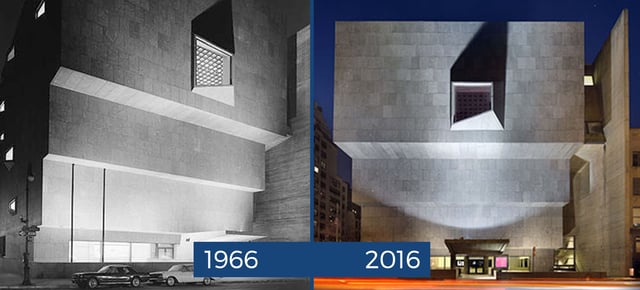 3. The Met Breuer
3. The Met Breuer
Photo Credit: 1966 - Whitney Museum of American Art Website 2016 - The MET Museum Website
Between 1966 and 2014, what is now known as “The Met Brauer” was once home to The Whitney Museum of American Art. The gray granite and concrete building, designed by architect Marcel Breuer, was made to house and compliment pieces of modernist and contemporary art. The Metropolitan Museum of Modern Art purchased the building and instead of renovating and repurposing the space, allotted a USD $600 million dollar restoration plan. Architects Beyer Blinder Belle have managed to restore the building back to all of its groovy glory from 1966, as well as fit in some security and systems upgrades. In March 2016 the building opened to the public allowing them to experience the building, aside from mobile devices and self-serving kiosks, as if it were 1966 all over again. 
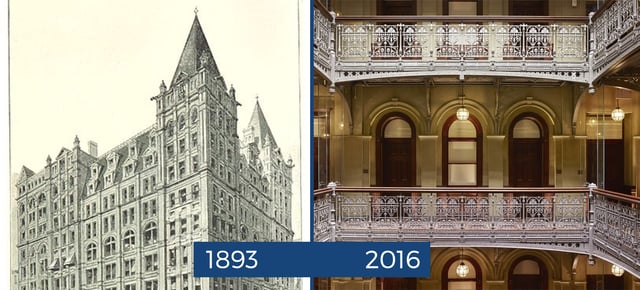 4. The Beekman Hotel
4. The Beekman Hotel
Photo Credit: 2016 - Thompson Hotels Website
5 Beekman Street wasn’t always a hotel. The red brick and terracotta Renaissance Revival-styled building
The interior of the building wasn’t a designated landmark, but when Gerner Kronick + Valcarcel, Architects were making plans for renovating the interior, they agreed to restore, instead of 
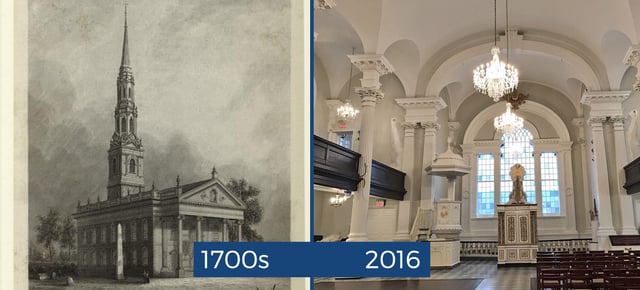 5. St. Paul's Chapel and Churchyard
5. St. Paul's Chapel and Churchyard
Photo Credit: 1700s - NYPL 2016 - Trinity Church Wall Street Blog
“The Little Chapel That Stood” has, in fact, been standing since its completion in 1766, making it the oldest surviving church building in Manhattan. Architect Thomas McBean designed the church while craftsman Andrew Gautier brought the vision to life. The building style mirrored that of the London church of St Martin-in-the-Fields, which is a Georgian church. Having been the place of worship for George Washington on his Inauguration Day in 1789, the church has had a long history of extraordinary moments. On September 11, 2001, the church became even more special, offering refuge for recovery workers and others who were part of and responding to World Trade Center terrorist attacks. The fences around the church became instant memorials for the victims of the
For more updates on restorations and landmarks around New York City, sign up for Insights.


